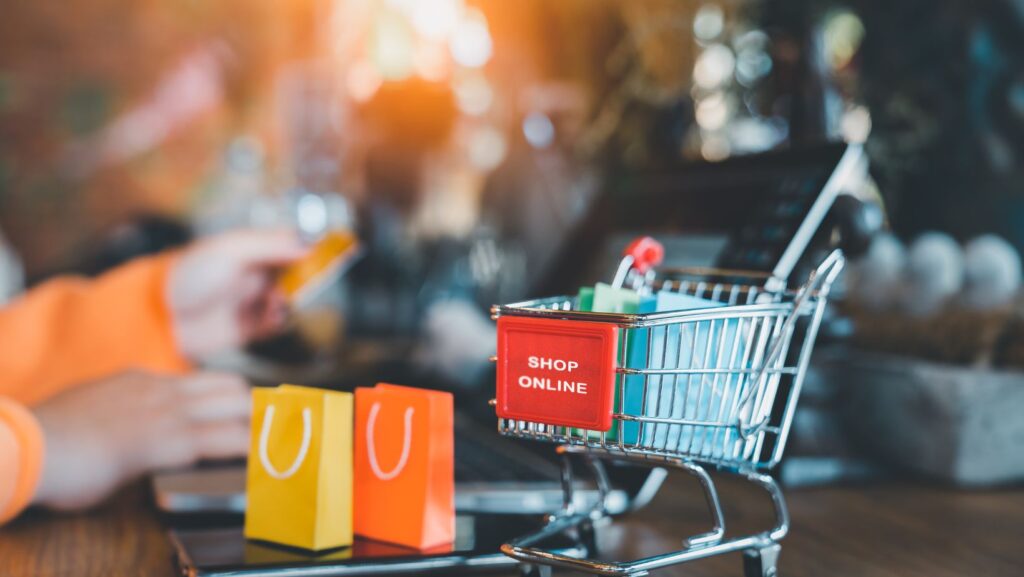These days, beauty isn’t just discovered on department store shelves or influencer Instagram feeds. It’s found in Amazon search results—where millions of shoppers are actively looking for their next go-to skincare serum, lipstick, or hair treatment. For emerging and established skincare and cosmetic brands, selling beauty products on Amazon isn’t just a trend—it’s a strategic move toward scalable, long-term growth.
As consumer behavior shifts toward convenience and trust-driven buying decisions, Amazon has become the digital makeup counter of the modern age. The platform offers visibility, credibility, and tools for brand building—especially for companies that once relied solely on DTC beauty ecommerce. With Amazon beauty brand services like beBold Digital’s premium marketing support, beauty businesses can now compete more effectively in this fast-paced, results-driven space.
So how do you begin? What does success really look like? This guide walks you through everything—from setting up your storefront to optimizing for skincare search terms—so you can launch with confidence and build a loyal customer base inside the world’s largest online beauty aisle.
Why Amazon is the Perfect Marketplace for Beauty Brands
For years, DTC beauty ecommerce has been all about independence. Brands built sleek websites, grew Instagram audiences, and poured thousands into paid ads. But now, the game is shifting. Amazon is no longer just for mass-market products—it’s becoming a curated beauty destination.
Amazon for beauty offers trust, reach, and infrastructure. More importantly, it’s where shoppers already go to repurchase products and read verified reviews before trying something new. A presence on Amazon validates your brand, builds awareness, and taps into impulse purchases you simply can’t capture with a standalone site.
The pandemic accelerated this shift. Consumers became more comfortable buying high-end serums and clean skincare through Amazon, as beauty lovers began prioritizing ease over brand loyalty. Now, selling on Amazon isn’t a fallback—it’s a competitive advantage.
Getting Started: Building Your Amazon Beauty Storefront
The first step to selling beauty products on Amazon is building a credible and conversion-friendly storefront. You’ll want to:
- Register your brand through Amazon’s Brand Registry, which protects your intellectual property and unlocks powerful marketing tools.
- Set up a branded store page that reflects your aesthetic—this is your chance to make Amazon feel like an extension of your own website.
- Ensure product listings are compliant with beauty category regulations, including labeling and ingredient disclosures.
Your storefront isn’t just a hub—it’s a storytelling space. Use it to educate shoppers, introduce collections, and showcase what makes your brand different.
How to Optimize Skincare and Cosmetic Listings for Maximum Sales
Success on Amazon comes down to one word: discoverability. That’s where skincare optimization plays a starring role.
Use the following tactics to improve your visibility and conversion rate:
- Title and bullet optimization: Include main keywords (like “retinol serum” or “paraben-free moisturizer”) naturally in product titles and feature bullets.
- Backend keyword fields: Leverage these fields to include alternate spellings, skin concerns, or trending ingredient names.
- Ingredient transparency: Shoppers want to know what’s in your product and why it matters. Include these details both in your description and imagery.
- Lifestyle and demo images: Show how the product fits into a routine. Before-and-after shots, clean visuals, and A+ Content all increase trust and conversion.
High-quality visuals and relevant keywords can’t be overstated. They act as your brand voice when you’re not physically there to sell.
Managing Fulfillment and Customer Experience
How you fulfill your orders impacts how Amazon ranks and rewards your listings. In the beauty category, fulfillment isn’t just logistics—it’s part of your brand experience.
There are two main fulfillment models:
- Fulfillment by Amazon (FBA): Amazon stores, ships, and handles customer service. Great for scalability and eligibility for Prime.
- Fulfillment by Merchant (FBM): You handle shipping. Offers more control but requires stellar logistics.
FBA is typically preferred for beauty brands due to Amazon’s strict storage conditions for temperature-sensitive products. It also minimizes delays and returns—key for products that may be part of a user’s daily routine.
Don’t overlook the customer service layer. Respond quickly to questions, address complaints transparently, and pay close attention to reviews that mention allergic reactions or shipping issues. Beauty is a sensitive category, both emotionally and dermatologically.
Advanced Tactics to Grow Your Beauty Brand on Amazon
Once your listings are live, it’s time to grow your audience and market share. Go beyond the basics with these advanced strategies:
- Amazon Live and influencer collaborations: These tools allow real-time engagement with potential customers. Demonstrate your product, answer questions, and build buzz.
- Sponsored brand ads: These appear at the top of search results and can push new SKUs or hero products into the spotlight.
- Time-sensitive bundles or seasonal kits: Use limited-time offers to create urgency and cater to holidays, summer skincare routines, or back-to-school regimens.
Beauty shoppers love discovery—lean into that by creating opportunities to explore new products or complete a regimen in one click.
Common Mistakes Beauty Brands Make on Amazon—and How to Avoid Them
Even the most beautiful packaging can’t fix a broken Amazon strategy. Here are pitfalls you’ll want to avoid:
- Ignoring compliance: Ensure that your skincare or cosmetic products meet FDA and Amazon guidelines. Missing or misleading ingredients can get listings pulled.
- Keyword stuffing: Optimization doesn’t mean repetition. Write naturally, and use keywords in a way that feels informative—not robotic.
- Underestimating customer education: Amazon listings can’t rely on brand loyalty. Use content to explain usage, expected results, and what makes your formula unique.
Mistakes are common—but they’re also correctable. Start simple, test strategies, and scale once you see what resonates with your audience.
Is Selling Beauty Products on Amazon Right for Your Brand?
If you’re a DTC skincare brand, you might wonder: Does selling on Amazon dilute your brand image?
Not if you do it right.
Amazon is an awareness channel, not just a sales engine. When done well, it complements your DTC beauty ecommerce strategy by offering an entry point for new customers. You still control your pricing, your messaging, and your packaging. But now, you’re part of the buying conversation when it matters most—at the search bar.
 Many brands are now embracing a hybrid model: exclusive SKUs on their website, and bestselling bundles or kits on Amazon. This reduces channel conflict and maximizes exposure.
Many brands are now embracing a hybrid model: exclusive SKUs on their website, and bestselling bundles or kits on Amazon. This reduces channel conflict and maximizes exposure.
Ready to Elevate Your Skincare Brand? Start Selling Beauty Products on Amazon Today
There’s never been a better time to enter the Amazon beauty marketplace. The tools are robust. The audience is ready. And your brand, if positioned well, can thrive among the competition.
Start by reviewing your hero products. Are they discoverable? Are they review-ready? Do they solve a clear problem for a beauty buyer?
Then, consider working with partners who specialize in Amazon for beauty. From compliance to creative, from optimization to operations, an experienced team can fast-track your success.
Remember: your packaging might win over someone in-store, but on Amazon, it’s your strategy that seals the deal.
So go ahead—get your brand registered, optimize those listings, and launch with purpose. Because in the world of online beauty, visibility isn’t optional. It’s everything.
And it starts the moment you decide to start selling beauty products on Amazon.


